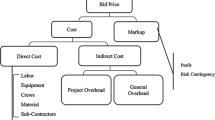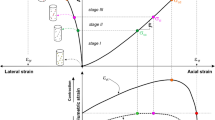Abstract
International Roughness Index (IRI) is the performance index of pavements that exhibits the efficiency of pavement smoothness. Road roughness is a fundamental element used for determining the performance of pavements and the ride quality of road users, therefore, this research aims to develop the precise IRI prediction model for flexible pavements using advanced machine learning algorithms including supervised methods. This research is directed toward accessing the functional performance of the pavements through long-term pavement performance (LTPP) databases. For developing the model, the incorporated dataset includes a set of functional attributes from general pavement studies (GPS-1, GPS-2 and GPS-6) and specific pavement studies (SPS-1, SPS-3 and SPS-5). The developed algorithms showed that the machine learning algorithms are more precise and accurate in predicting the IRI than the traditional regression approaches. The machine learning algorithms use the shapely additive explanation (SHAP) values to access the feature significance for each independent element on the predictive performance. The analysis showed that CatBooster Regression outperformed the random forest regression, artificial neural network (ANN), and the simple regression models in terms of mean square error and prediction quality with a coefficient of determination up to 0.99. The study depicted that it is possible to correlate the roughness index with pavement and structural, climatic and distress parameters that can be utilized for pavement maintenance.








Similar content being viewed by others
Availability of Data and Materials
All the datasets implemented in the research are available from the Department of Transportation United States Government website at https://infopave.fhwa.dot.gov.
Abbreviations
- LTTP:
-
Long term pavement performance
- MLR:
-
Multiple linear regression
- RF:
-
Random forest
- ANN:
-
Artificial neural network
- GP:
-
Genetic programming
- SHAP:
-
Shapely additive explanations
- GMDH:
-
Group method of data handling
References
Paterson, W. D. 0. (1987). Ioog; the highway design and maintenance standards series road deterioration and maintenance effects 5E-i.
Elhadidy, A. A., El-Badawy, S. M., & Elbeltagi, E. E. (2021). A simplified pavement condition index regression model for pavement evaluation. International Journal of Pavement Engineering, 22(5), 643–652. https://doi.org/10.1080/10298436.2019.1633579
Sayers, M. W., Gillespie, T. D., & Paterson, W. D. (1986). WTP-46 guidelines for conducting and calibrating road roughness measurements.
Fhwa. (2016). Tech brief measuring and specifying pavement smoothness.
Ziari, H., Sobhani, J., Ayoubinejad, J., & Hartmann, T. (2015). Prediction of IRI in short and long terms for flexible pavements: ANN and GMDH methods. International Journal of Pavement Engineering, 17(9), 776–788. https://doi.org/10.1080/10298436.2015.1019498
Sidess, A., Ravina, A., & Oged, E. (2020). A model for predicting the deterioration of the international roughness index. International Journal of Pavement Engineering. https://doi.org/10.1080/10298436.2020.1804062
Kirbaş, U. (2018). IRI sensitivity to the influence of surface distress on flexible pavements. Coatings. https://doi.org/10.3390/coatings8080271
Guo, R., Fu, D., & Sollazzo, G. (2021). An ensemble learning model for asphalt pavement performance prediction based on gradient boosting decision tree. International Journal of Pavement Engineering. https://doi.org/10.1080/10298436.2021.1910825
Li, W., Huyan, J., Xiao, L., Tighe, S., & Pei, L. (2019). International roughness index prediction based on multigranularity fuzzy time series and particle swarm optimization. Expert Systems with Applications. https://doi.org/10.1016/j.eswax.2019.10
Yang, G., Li, Q. J., Zhan, Y., Fei, Y., & Zhang, A. (2018). Convolutional neural network-based friction model using pavement texture data. Journal of Computing in Civil Engineering, 32(6), 04018052. https://doi.org/10.1061/(asce)cp.1943-5487.0000797
Najafi, S., Flintsch, G. W., & Khaleghian, S. (2019). Pavement friction management–artificial neural network approach. International Journal of Pavement Engineering, 20(2), 125–135. https://doi.org/10.1080/10298436.2016.1264221
Gong, H., Sun, Y., Mei, Z., & Huang, B. (2018). Improving accuracy of rutting prediction for mechanistic-empirical pavement design guide with deep neural networks. Construction and Building Materials, 190, 710–718. https://doi.org/10.1016/j.conbuildmat.2018.09.087
Hossain, M. I., Gopisetti, L. S. P., & Miah, M. S. (2019). International roughness index prediction of flexible pavements using neural networks. Journal of Stomatology. https://doi.org/10.1061/JPEODX.0000088
Abdelaziz, N., Abd El-Hakim, R. T., El-Badawy, S. M., & Afify, H. A. (2020). International Roughness Index prediction model for flexible pavements. International Journal of Pavement Engineering, 21(1), 88–99. https://doi.org/10.1080/10298436.2018.1441414
Sandra, A. K., & Sarkar, A. K. (2013). Development of a model for estimating International Roughness Index from pavement distresses. International Journal of Pavement Engineering, 14(8), 715–724. https://doi.org/10.1080/10298436.2012.703322
Abd El-Hakim, R., & El-Badawy, S. (2013). International roughness index prediction for rigid pavements: an artificial neural network application. Advanced Materials Research, 723, 854–860. https://doi.org/10.4028/www.scientific.net/AMR.723.854
Shahnazari, H., Tutunchian, M. A., Mashayekhi, M., & Amini, A. A. (2012). Application of soft computing for prediction of pavement condition index. Journal of Transportation Engineering. https://doi.org/10.1061/(ASCE)TE
Dalla Rosa, F., Liu, L., & Gharaibeh, N. G. (2017). IRI prediction model for use in network-level pavement management systems. Journal of Transportation Engineering, Part B: Pavements, 143(1), 04017001. https://doi.org/10.1061/jpeodx.0000003
Gharieb, M., & Nishikawa, T. (2021). Development of roughness prediction models for Laos national road network. CivilEng, 2(1), 158–173. https://doi.org/10.3390/civileng2010009
Chandra, S., Sekhar, C. R., Bharti, A. K., & Kangadurai, B. (2013). Relationship between pavement roughness and distress parameters for Indian highways. Journal of Transportation Engineering. https://doi.org/10.1061/(ASCE)TE
Nassiri, S., Shafiee, M. H., & Bayat, A. (2013). Development of roughness prediction models using Alberta transportation’s pavement management system. International Journal of Pavement Research and Technology, 6(6), 714–720. https://doi.org/10.6135/ijprt.org.tw/2013.6(6).714
Karballaeezadeh, N., Mohammadzadeh, D., Moazemi, D., Nabipour, N., Mosavi, A., & Reuter, U. (2020). Smart structural health monitoring of flexible pavements using machine learning methods. Coatings. https://doi.org/10.20944/preprints202004.0029.v1
Gong, H., Sun, Y., Shu, X., & Huang, B. (2018). Use of random forests regression for predicting IRI of asphalt pavements. Construction and Building Materials, 189, 890–897. https://doi.org/10.1016/j.conbuildmat.2018.09.017
Hancock, J. T., & Khoshgoftaar, T. M. (2020). CatBoost for big data: an interdisciplinary review. Journal of Big Data. https://doi.org/10.1186/s40537-020-00369-8
Hossain, M. I., Gopisetti, L. S. P., & Miah, M. S. (2017). Prediction of international roughness index of flexible pavements from climate and traffic data using artificial neural network modeling. In: Airfield and Highway Pavements 2017: Design, Construction, Evaluation, and Management of Pavements - Proceedings of the International Conference on Highway Pavements and Airfield Technology 2017, 2017-August, 256–267. https://doi.org/10.1061/9780784480922.023.
Basheer, I. A., & Hajmeer, M. (2000). Artificial neural networks: fundamentals, computing, design, and application. Journal of Methods Microbiological Journal of Microbiological Methods 43. www.elsevier.com/locate/jmicmeth.
Jain, K.A. (1996). Artificial neural network.
Sollazzo, G., Fwa, T. F., & Bosurgi, G. (2017). An ANN model to correlate roughness and structural performance in asphalt pavements. Construction and Building Materials, 134, 684–693. https://doi.org/10.1016/j.conbuildmat.2016.12.186
Agarap, A. F. (2018). Deep Learning using Rectified Linear Units (ReLU). http://arxiv.org/abs/1803.08375.
Dozat, T. (2015). Incorporating Nesterov Momentum into Adam. http://mattmahoney.net/dc/text8.zip.
Ruder, S. (2016). An overview of gradient descent optimization algorithms. http://arxiv.org/abs/1609.04747.
Breiman, L. (2001). Random forests. 45.
Biau, G., & Fr, G. B. (2012). Analysis of a random forests model. Journal of Machine Learning Research, 13, 1063–1095.
Scornet, E., Biau, G., & Vert, J. P. (2015). Consistency of random forests. Annals of Statistics, 43(4), 1716–1741. https://doi.org/10.1214/15-AOS1321
Jain, V. (2019). Network intrusion detection using CatBoost algorithm.
Prokhorenkova, L., Gusev, G., Vorobev, A., Dorogush, A. V., & Gulin, A. (2017). CatBoost: unbiased boosting with categorical features. http://arxiv.org/abs/1706.09516.
Ibrahim, A. A., Ridwan, R. L., Muhammed, M. M., Abdulaziz, R. O., & Saheed, G. A. (2020). Comparison of the CatBoost classifier with other machine learning methods. IJACSA) International Journal of Advanced Computer Science and Applications 11(11). www.ijacsa.thesai.org.
Highway Administration, F., & Pavement Performance program, L.-T. (2017). The long-term pavement performance program.
Elkins, G., & Ostrom, B. (2019). Long-term pavement performance information management system user guide. http://www.fhwa.dot.gov/research/tfhrc/programs/infrastructure/pavements/ltpp/.
Issa, A., Samaneh, H., & Ghanim, M. (2021). Predicting pavement condition index using artificial neural networks approach. Ain Shams Engineering Journal. https://doi.org/10.1016/j.asej.2021.04.033
Mazari, M., & Rodriguez, D. D. (2016). Prediction of pavement roughness using a hybrid gene expression programming-neural network technique. Journal of Traffic and Transportation Engineering (English Edition), 3(5), 448–455. https://doi.org/10.1016/j.jtte.2016.09.007
Lundberg, S., & Lee, S.-I. (2017). A unified approach to interpreting model predictions. http://arxiv.org/abs/1705.07874.
Abadi, M., Agarwal, A., Barham, P., Brevdo, E., Chen, Z., Citro, C., Corrado, G. S., Davis, A., Dean, J., Devin, M., Ghemawat, S., Goodfellow, I., Harp, A., Irving, G., Isard, M., Jia, Y., Jozefowicz, R., Kaiser, L., Kudlur, M., & Zheng, X. (2016). TensorFlow: Large-scale machine learning on heterogeneous distributed systems. http://arxiv.org/abs/1603.04467.
Schonlau, M., & Zou, R. Y. (2020). The random forest algorithm for statistical learning. Stata Journal, 20(1), 3–29. https://doi.org/10.1177/1536867X20909688
Sidess, A., Ravina, A., & Oged, E. (2021). A model for predicting the deterioration of the pavement condition index. International Journal of Pavement Engineering, 22(13), 1625–1636. https://doi.org/10.1080/10298436.2020.1714044
Acknowledgements
The authors are thankful to the Long Term Pavement Performance-Federal Highway Administration, United States of America, for providing the source data collected through online database for the project “Prediction of International Roughness Index Using Machine Learning Algorithms” as a part of research study.
Author information
Authors and Affiliations
Contributions
SB: conceptualization, methodology, designed and tested the algorithms in the research, writing-original draft preparation. PPK: investigation, resources, data curation, review and editing coordinated this research. TC: writing- review & editing, visualization, supervision.
Corresponding author
Ethics declarations
Conflict of Interest
The authors declare that they have no competing interests.
Consent for Publications
Not applicable.
Ethical Approval and Consent to Participate
Not applicable.
Rights and permissions
Springer Nature or its licensor (e.g. a society or other partner) holds exclusive rights to this article under a publishing agreement with the author(s) or other rightsholder(s); author self-archiving of the accepted manuscript version of this article is solely governed by the terms of such publishing agreement and applicable law.
About this article
Cite this article
Bral, S., Kumar, P.P. & Chopra, T. Prediction of International Roughness Index Using CatBooster and Shap Values. Int. J. Pavement Res. Technol. 17, 518–533 (2024). https://doi.org/10.1007/s42947-022-00253-z
Received:
Revised:
Accepted:
Published:
Issue Date:
DOI: https://doi.org/10.1007/s42947-022-00253-z




